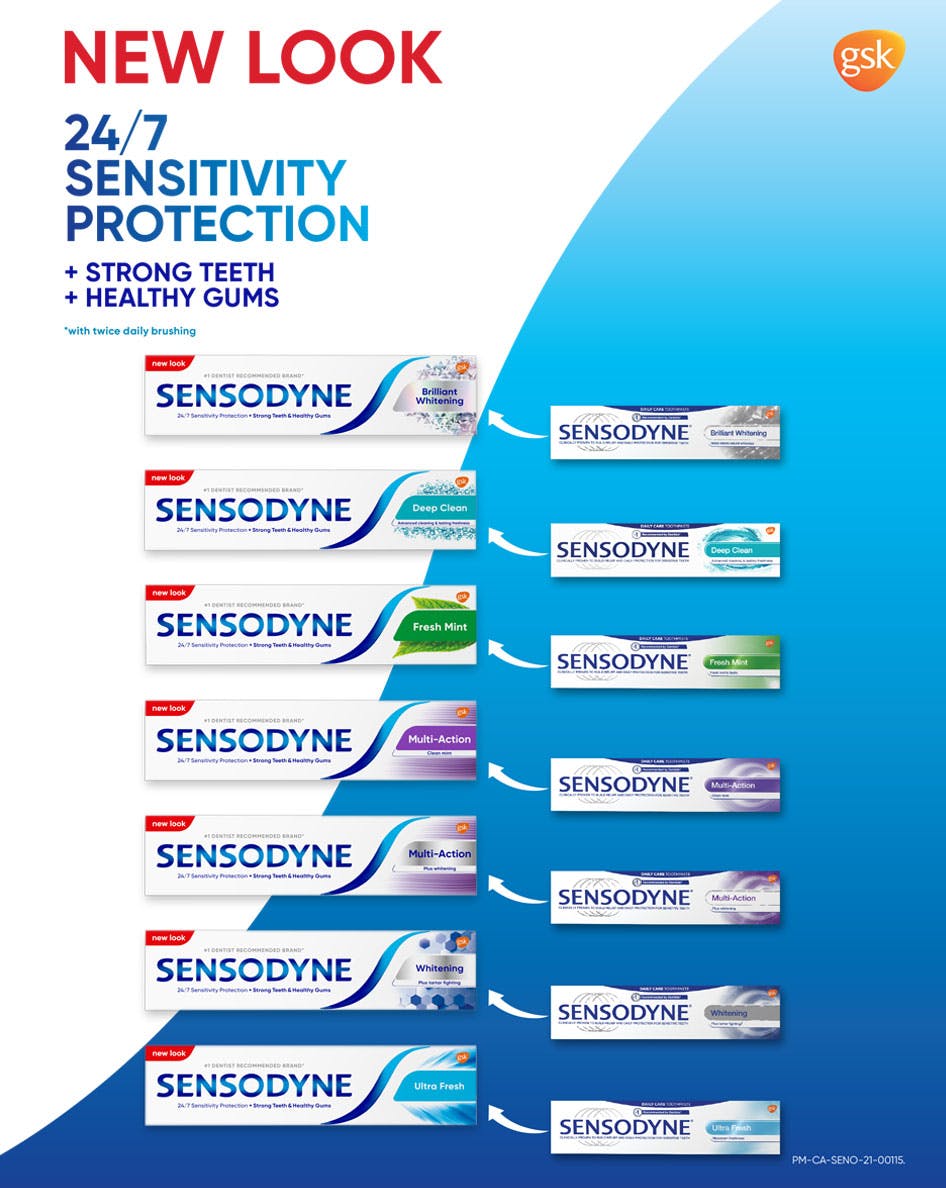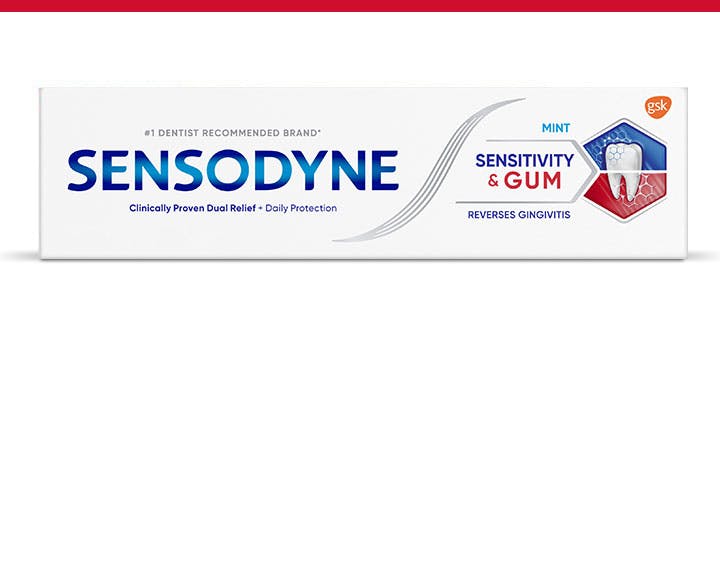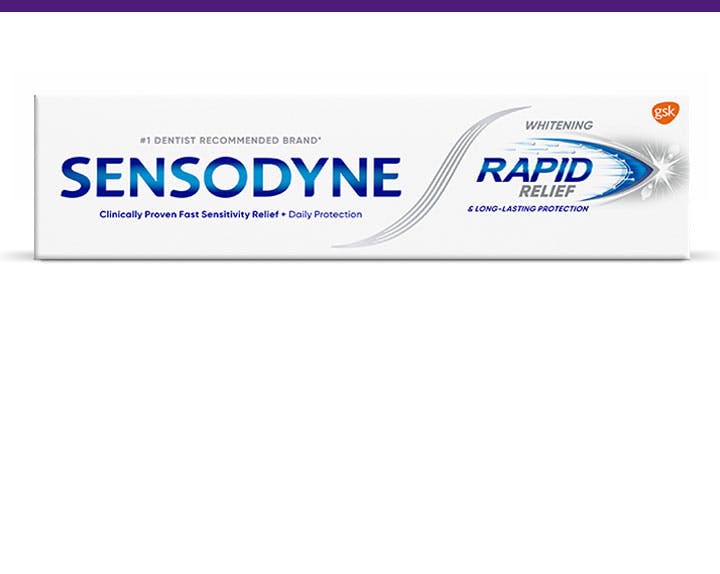Does Sensodyne toothpaste help prevent cavities?
Yes. All Sensodyne products contain fluoride, which helps protect against cavities.
Yes. All Sensodyne products contain fluoride, which helps protect against cavities.
Using a daily sensitivity toothpaste, like Sensodyne, can relieve and protect against tooth sensitivity pain when used twice every day.
If you have sensitive teeth and are looking for a toothpaste that relieves sensitivity and removes stains effectively, Sensodyne Brilliant Whitening gently and effectively helps to remove stains to restore the natural whiteness of your teeth, while also delivering long-lasting sensitivity protection.
Over time, your tooth enamel can wear away and gums can recede, exposing the dentin that leads to the nerves inside your teeth. Certain triggers can aggravate these nerves, causing sensitivity pain.
Certain triggers (like ice cream or hot coffee) can stimulate the nerves inside your teeth, resulting in a sudden, short, sharp pain, known as tooth sensitivity.
Yes. As many as 1 in 3 people may experience dentine hypersensitivity/tooth sensitivity.1
Sensodyne toothpastes work by either soothing the nerves inside your teeth or by building a barrier over sensitive areas of your teeth.
Use Sensodyne toothpaste as your daily toothpaste, brushing twice a day, every day, for effective sensitivity protection.
Sensitive teeth need to be cared for in a special way and if teeth are sensitive, there are some important but simple steps that can be taken to brush teeth correctly to help stop them from getting worse. For more information and guidance, check this link.
[1] Addy, M. (2002) 'Dentine hypersensitivity: new perspectives on an old problem', International Dental Journal, 52(S5P2), pp. 367-375.





